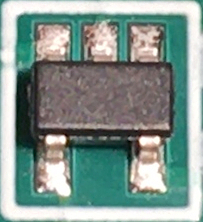Related Research Articles
In reliability engineering, the term availability has the following meanings:
Unavailability, in mathematical terms, is the probability that an item will not operate correctly at a given time and under specified conditions. It opposes availability.
Mean time between failures (MTBF) is the predicted elapsed time between inherent failures of a mechanical or electronic system during normal system operation. MTBF can be calculated as the arithmetic mean (average) time between failures of a system. The term is used for repairable systems while mean time to failure (MTTF) denotes the expected time to failure for a non-repairable system.

The technical meaning of maintenance involves functional checks, servicing, repairing or replacing of necessary devices, equipment, machinery, building infrastructure, and supporting utilities in industrial, business, and residential installations. Over time, this has come to include multiple wordings that describe various cost-effective practices to keep equipment operational; these activities occur either before or after a failure.
Mean time to recovery (MTTR) is the average time that a device will take to recover from any failure. Examples of such devices range from self-resetting fuses, to whole systems which have to be repaired or replaced.
A service-level agreement (SLA) is a commitment between a service provider and a customer. Particular aspects of the service – quality, availability, responsibilities – are agreed between the service provider and the service user. The most common component of an SLA is that the services should be provided to the customer as agreed upon in the contract. As an example, Internet service providers and telcos will commonly include service level agreements within the terms of their contracts with customers to define the level(s) of service being sold in plain language terms. In this case, the SLA will typically have a technical definition of mean time between failures (MTBF), mean time to repair or mean time to recovery (MTTR); identifying which party is responsible for reporting faults or paying fees; responsibility for various data rates; throughput; jitter; or similar measurable details.

A watchdog timer is an electronic or software timer that is used to detect and recover from computer malfunctions. Watchdog timers are widely used in computers to facilitate automatic correction of temporary hardware faults, and to prevent errant or malevolent software from disrupting system operation.
In computer networks, a network element is a manageable logical entity uniting one or more physical devices. This allows distributed devices to be managed in a unified way using one management system.
Reliability engineering is a sub-discipline of systems engineering that emphasizes the ability of equipment to function without failure. Reliability describes the ability of a system or component to function under stated conditions for a specified period of time. Reliability is closely related to availability, which is typically described as the ability of a component or system to function at a specified moment or interval of time.
The Service Availability Forum is a consortium that develops, publishes, educates on and promotes open specifications for carrier-grade and mission-critical systems. Formed in 2001, it promotes development and deployment of commercial off-the-shelf (COTS) technology.
Fault tolerance is the property that enables a system to continue operating properly in the event of the failure of one or more faults within some of its components. If its operating quality decreases at all, the decrease is proportional to the severity of the failure, as compared to a naively designed system, in which even a small failure can cause total breakdown. Fault tolerance is particularly sought after in high-availability, mission-critical, or even life-critical systems. The ability of maintaining functionality when portions of a system break down is referred to as graceful degradation.
Replication in computing involves sharing information so as to ensure consistency between redundant resources, such as software or hardware components, to improve reliability, fault-tolerance, or accessibility.
High availability (HA) is a characteristic of a system which aims to ensure an agreed level of operational performance, usually uptime, for a higher than normal period.
In organizational management, mean down time (MDT) is the average time that a system is non-operational. This includes all downtime associated with repair, corrective and preventive maintenance, self-imposed downtime, and any logistics or administrative delays.
The term downtime is used to refer to periods when a system is unavailable.
Continuous availability is an approach to computer system and application design that protects users against downtime, whatever the cause and ensures that users remain connected to their documents, data files and business applications. Continuous availability describes the information technology methods to ensure business continuity.
Availability is the probability that a system will work as required when required during the period of a mission. The mission could be the 18-hour span of an aircraft flight. The mission period could also be the 3 to 15-month span of a military deployment. Availability includes non-operational periods associated with reliability, maintenance, and logistics.
Maintenance Philosophy is the mix of strategies that ensure an item works as expected when needed.
Software reliability testing is a field of software-testing that relates to testing a software's ability to function, given environmental conditions, for a particular amount of time. Software reliability testing helps discover many problems in the software design and functionality.
RAMP Simulation Software for Modelling Reliability, Availability and Maintainability (RAM) is a computer software application developed by WS Atkins specifically for the assessment of the reliability, availability, maintainability and productivity characteristics of complex systems that would otherwise prove too difficult, cost too much or take too long to study analytically. The name RAMP is an acronym standing for Reliability, Availability and Maintainability of Process systems.
References
- ↑ "BusinessDictionary.com, Mean Time To Repair definition". Archived from the original on 2018-05-27. Retrieved 2009-09-01.
- ↑ "Institute for Telecommunications Sciences, Mean Time To Repair definition". Archived from the original on September 25, 2008.